Ordovician Mollusk Fossils
An important characteristic of most molluscs is the head-foot
region. Most molluscs are strongly cephalized; that is, they have
a well-developed head, in which is located a mouth and a
concentration of nervous and sensory functions. Adjacent to the
head is a large, muscular foot formed from the ventral body wall.
Used primarily in locomotion, the surface of the foot is sometimes
ciliated and laden with numerous mucous glands. Another characteristic of
most molluscs is the mantle. This sheath
of tissue is formed from the dorsal body wall. It surrounds the
mantle cavity, which houses the gills or lungs if they are
present, and its surface may assist in gas exchange. The mantle
also secretes the shell in those forms that possess one.
Mollusks have a complete digestive tract, spanning from the mouth
to the anus. Many also have a radula, a unique organ composed mostly
of chitin, in the mouth. The radula allows the animal to scrape food
from surfaces, especially the ocean floor, by sliding back and forth.
Click on any image to see a larger, more detailed
view
|
Genus/species:
|
Tentaculites richmondensis
|
|
Images
|

|
|
Notes:
|
Well preserved specimen 1.79 cm in length. Tentaculites is a bizarre creature and it's true
classification is unknown, but many people place it in the phylum molluska.
|
Class:Cephalopoda
Subclass:Nautiloidea
Order:Orthocerida
|
Genus/species:
|
?Richmondoceras sp.
|
|
Images
|

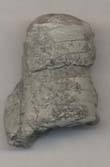
|
|
Notes:
|
First specimen is a mold of an orthocerid . Approx. 2 cm in length.
Second specimen is another mold of an orthocerid 2.33 cm in length.
|
|
Genus/species:
|
?Treptoceras sp.
|
|
Images
|

|
|
Notes:
|
Another mold of an orthocerid 3.51 cm in length.
|
Class:Cephalopoda
Subclass:Nautiloidea
Order:Actinocerida
|
Genus/species:
|
?Lambyoceras sp.
|
|
Images
|

|
|
Notes:
|
A mold of an orthocerid 3.13 cm in length. This specimen differs from the above by the fact that the chambers are
narrower and more curved
|
Class:Cephalopoda
Subclass:Nautiloidea
|
Genus/species:
|
unknown nautiloid
|
|
Images
|
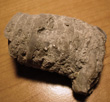

|
|
Notes:
|
Unknown nautiloid 5.6 cm in length and 2.75 cm wide. Chamber segments are
about 0.4 cm wide. Still heavily encased in matrix.
|
Class:Gastropoda
Suborder:Euomphalina
Superfamily:Platyceratacea
Family:Platyceratidae
Class:Gastropoda
Suborder:Euomphalina
Superfamily:Platyceratacea
|
Genus/species:
|
Cyclonema sp.
|
|
Images
|
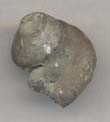
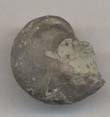
|
|
Notes:
|
Well preserved specimen 1.09 cm high and 1.42 cm wide.
|
Class:Gastropoda
|
Genus/species:
|
?
|
|
Images
|
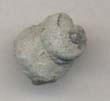
|
|
Notes:
|
This specimen is difficult to classify, but the angle of the shell growth and spiral
shape may indicate that this is a fragment of a Cyclonema specimen. This specimen has
a slightly flatter profile than usual for Cyclonema so this classification may be in error.
No exact match is found in the reference. The specimen is .85 cm high and approximately .78 cm wide.
|
Class:Gastropoda
Order:Oncocerida
|
Genus/species:
|
?Augustoceras sp.
|
|
Images
|
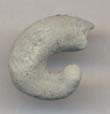
|
|
Notes:
|
Internal mold of a specimen. Augustoceras is not listed in the reference so this classification may be in error.
Specimen is 1.32 cm at its widest point and .43 cm high.
|
Class:Bivalvia
Superfamily:Ambonychiacea
|
Genus/species:
|
Ambonychia sp.
|
|
Images
|
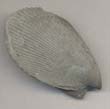
|
|
Notes:
|
Pelycopod specimen 4.19 cm in length and 2.64 cm wide.
|
Class:Bivalvia
|
Genus/species:
|
Unknown pelycopod
|
|
Images
|


|
|
Notes:
|
Unknown pelycopod specimen 3 cm in length and 2 cm wide. The color is
noticeably black.
|
|
